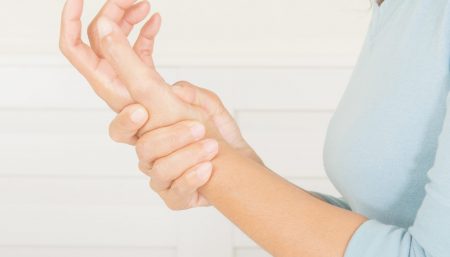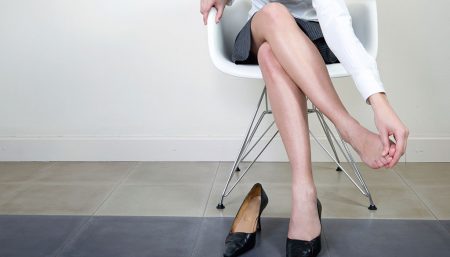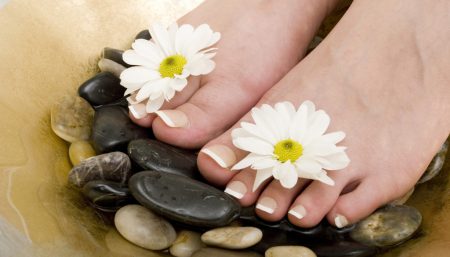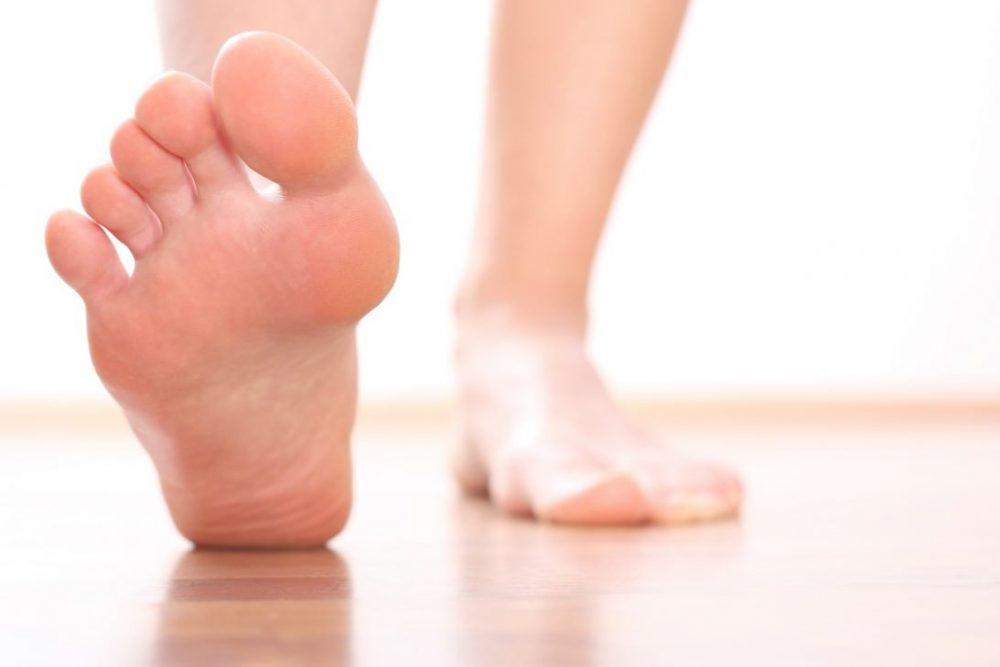
Corns and calluses are both a thickening of the outer layer of skin. This thickening is known medically as hyperkeratosis. Corns and calluses develop as part of the skin’s normal defense against prolonged rubbing, pressure and other forms of local irritation.
A callus can develop anywhere on the body where there is regular or prolonged pressure of friction, providing a protective pad against injury.In general, calluses appear on the feet, the part of the body that absorbs the most friction on a daily basis.
However, manual laborers and athletes (such as tennis players) often develop calluses on their hands, desk workers get them from resting on their elbows and guitarists have them on their fingertips.Even pushing a pen may create a “writer’s” lump where the pen presses into the finger. Calluses are not usually painful, although they do blemish the skin.
Calluses are extensive patches of toughened skin that can occur on any part of the body, especially the feet, hands and knees.
What is a Corn?
A thick callus on a toe is known as a corn, and it has a hard kernel formed in the centre.Because it often presses on the nerves below, a corn can be painful.You can use corn-removing plasters, which are available from pharmacies, to remove a corn.
They consist of a foam circle with salicylic acid in the centre, which eats away the plug of dead skin.Or you can visit a chiropodist who will carefully pare away the thickened layers of skin with a scalpel.Remember that for a complete cure you must remove the pressure that caused the corn in the first place.Make sure that your shoes fit properly.
Corns and calluses can be a long-term problem if you consistently wear shoes that do not fit properly. Even with good footwear, you may continue to have painful corns and calluses if there is some underlying abnormality in your gait or foot structure that causes unusual stress on parts of your feet when you walk.
On the feet, a small corn or callus may not cause any symptoms. However, a large, bulky corn or callus can cause foot pain and difficulty walking.
After prolonged irritation, a discolored area (brown, red or black) may develop under a large corn or callus. This discoloration is caused by a small amount of bleeding in the space between thick and normal skin. In severe cases, the thick and normal skin may separate, exposing the area to possible infection, especially in persons with diabetes
On the feet, a small corn or callus may not cause any symptoms. However, a large, bulky corn or callus can cause foot pain and difficulty walking.
After prolonged irritation, a discolored area (brown, red or black) may develop under a large corn or callus. This discoloration is caused by a small amount of bleeding in the space between thick and normal skin. In severe cases, the thick and normal skin may separate, exposing the area to possible infection, especially in persons with diabetes.
Your health-care provider probably will ask questions about your shoes, because shoes with narrow toes are more likely to cause corns. He or she also will ask about your foot history. Some types of foot problems can alter the mechanics of the foot, producing abnormal pressure on certain areas and leading to calluses. Also, any previous surgery or trauma to the feet may affect the structure and alignment of foot bones, increasing the risk of calluses. A detailed review of past medical problems, especially diabetes and circulation problems, are a routine part of the evaluation.
To assess whether your corns and calluses are related to foot abnormalities, your doctor will inspect your feet for toe deformities, structural abnormalities of the bones, poor bone alignment and problems related to an abnormal way of walking (gait). If your doctor finds some abnormality during this part of the foot exam, he or she may suggest a specific type of padding or shoe insert that will help to prevent your corns and calluses from returning or causing as much discomfort.
Treatment Options
- Wear proper shoes! Never wear tight-fitting footwear!
- Do not use “corn plasters.” These contain acids intended to eat away at the corns. But they also eat into nearby normal flesh.
- Do not cut corns and calluses! This only makes the situation worse. This especially applies to diabetics. As soon as a corn develops, apply oil to soften it.
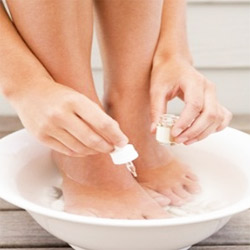 Soak your feet in very diluted chamomile tea. It will both soothe and soften the hard skin. (The stain the tea makes on the feet will come off easily with soap and water.) Or just soak the feet in comfortably hot water for several minutes. Then apply a hand cream which contains 20% urea. This will help dissolve the hard skin. Do this daily.
Soak your feet in very diluted chamomile tea. It will both soothe and soften the hard skin. (The stain the tea makes on the feet will come off easily with soap and water.) Or just soak the feet in comfortably hot water for several minutes. Then apply a hand cream which contains 20% urea. This will help dissolve the hard skin. Do this daily.- Another formula is to soak the area in a mixture of oil of wintergreen, witch hazel, and black walnut tincture, daily. Use a pumice stone and emery board to trim down the corn or callus.
- Put a few drops of citric acid on the area. The next morning, use an emery board or a pumice stone and rub off the dead skin.
- Yet another formula is to crush 5-6 aspirin tablets and mix into a paste, by adding a half teaspoon each of water and lemon juice. Apply this to the hard-skin areas. Put the foot in a plastic bag, wrap a warm towel around it, and sit for 10 minutes. Then unwrap the foot and scrub the area with a pumice stone. The dead, hardened flesh should come loose and flake off.
- A variant method is to soak a piece of cotton in fresh lemon juice or pineapple. Bandage the cotton over the area. It will dissolve it. But you must be persistent.
- Any sweet oil rubbed on the area several times a day, plus the use of the emery board or pumice stone, will skim off the dead flesh.
- Try putting some lamb’s wool between the toes, to separate them (after buying larger shoes).
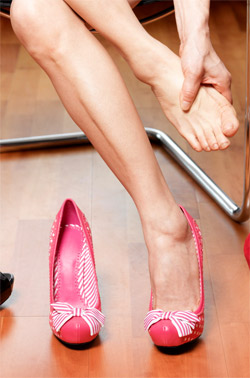 Women should avoid wearing high-heel shoes. They ruin the feet, damage the spine, and throw the pelvic organs out of place.
Women should avoid wearing high-heel shoes. They ruin the feet, damage the spine, and throw the pelvic organs out of place.- Women should not wear pumps; these are shoes which cause the foot to slide forward, jamming everything into the front. Instead, wear an oxford-style shoe, with laces. This properly cradles the foot.
- Always buy shoes which breathe; leather is the best.
- An undersized shoe will damage the toes and cause corns, etc. An oversized shoe will produce friction and break the skin. But, of the two, oversized shoes are the less harmful.
- Some calluses are useful, never painful, and should not be disturbed.
Disclaimer
The Content is not intended to be a substitute for professional medical advice, diagnosis, or treatment. Always seek the advice of your physician or other qualified health provider with any questions you may have regarding a medical condition.
